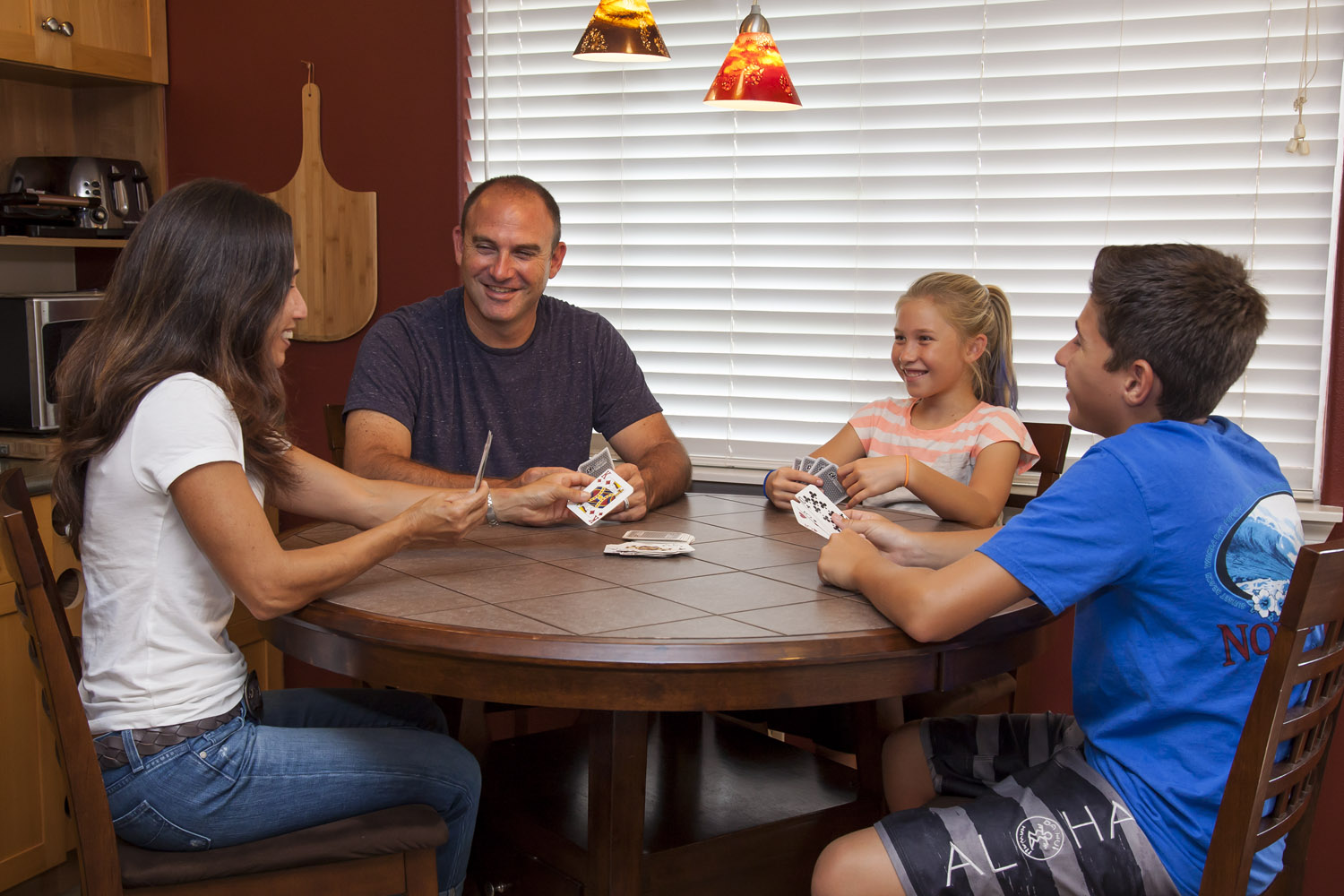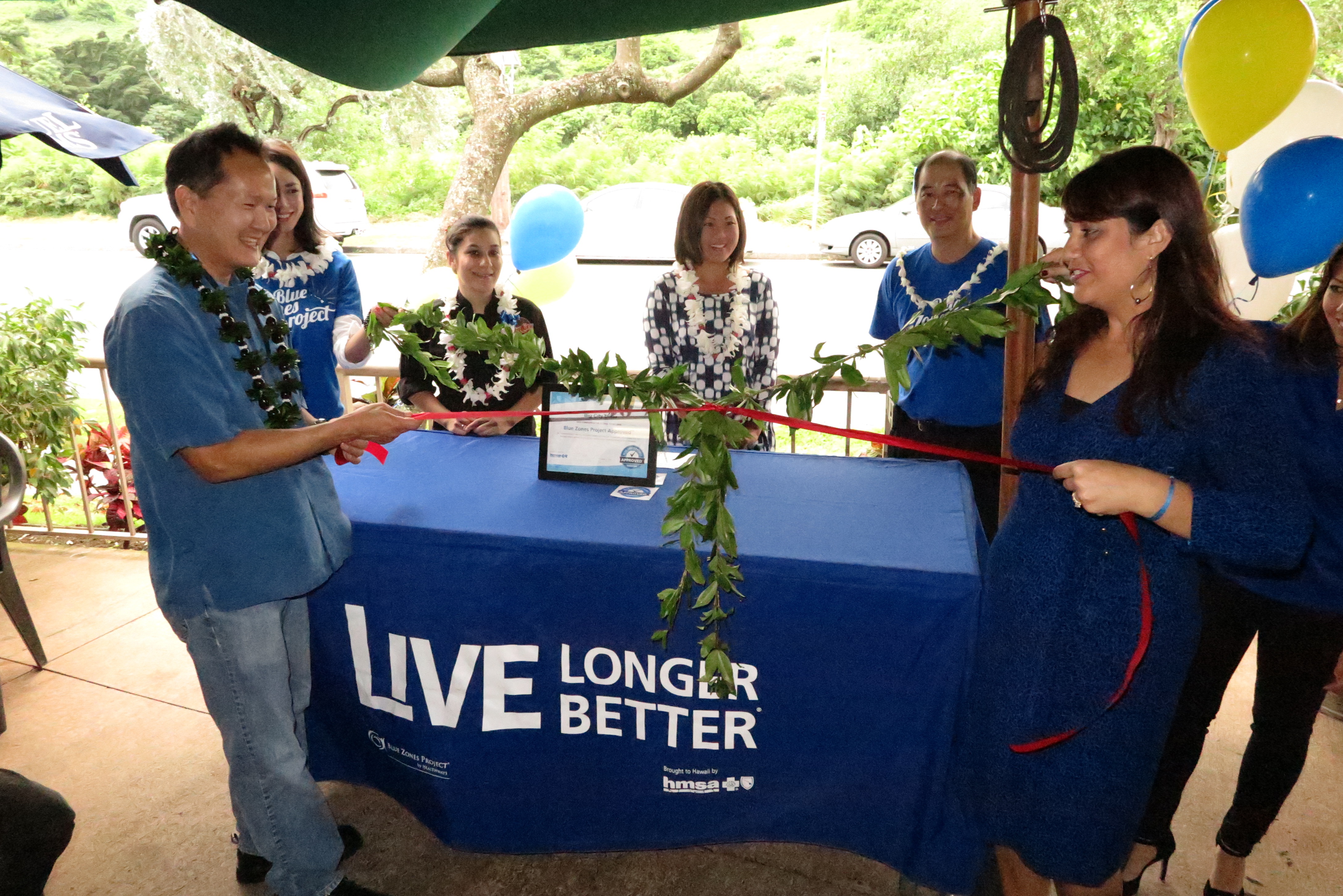BIG ISLAND COMMUNITIES TAKE STEPS TOWARD SAFER, MORE PEDESTRIAN AND BIKE-FRIENDLY TOWNS
Built environment, in the context of Blue Zones Project, refers to the infrastructure supporting active transportation, recreation, and connection with the people and places of a community. Think of the streets, parks, paths, green buffers, other open spaces, buildings, attractions and other destinations which give us both the reason and the means to step out of our houses and into the world around us. A well designed built environment favors distances at a walking scale, eliminating the need to be in a car for our most important and frequent destinations. Our built environment is the framework that encourages – or discourages – active lifestyles, natural movement, and social interaction through walking, biking, hiking, learning and playing together. As such, it is a critical component of healthy, thriving communities and a key pillar of the Blue Zones Project program.
 In early November, steps were taken toward defining built environment goals to strive for as part of the Blue Zones Project – North Hawaii and East Hawaii initiatives. Nationally renowned active living champions Dan Burden and Samantha Thomas were on-hand to facilitate workshops in Hilo, Waimea, and Honokaa which drew participation from residents, civic leaders, community organizations, business leaders, advocates, government agencies and officials. The purpose of these workshops was to bring together leaders and neighborhood visionaries to identify shared values. This group included a range of community stakeholders, who gathered together to identify built environment priorities which support those values. The interactive working sessions featured a brief presentation on the principles of place-making and healthy communities, as well as partnership-building and visioning exercises. Dan and Samantha also led group walking audits to give participants a firsthand “feet on the street” experience of walkability and active living concepts.
In early November, steps were taken toward defining built environment goals to strive for as part of the Blue Zones Project – North Hawaii and East Hawaii initiatives. Nationally renowned active living champions Dan Burden and Samantha Thomas were on-hand to facilitate workshops in Hilo, Waimea, and Honokaa which drew participation from residents, civic leaders, community organizations, business leaders, advocates, government agencies and officials. The purpose of these workshops was to bring together leaders and neighborhood visionaries to identify shared values. This group included a range of community stakeholders, who gathered together to identify built environment priorities which support those values. The interactive working sessions featured a brief presentation on the principles of place-making and healthy communities, as well as partnership-building and visioning exercises. Dan and Samantha also led group walking audits to give participants a firsthand “feet on the street” experience of walkability and active living concepts.
Important built environment changes are recommended for all people in Hawaii over time. But to scale this work, and to have some early successes as models, it was important to work with select areas first. Why the focus on Hilo for East Hawaii, and Waimea and Honokaa for North Hawaii? Given the three-year timeframe in which Blue Zones Project resources are on the ground to support the community effort, identifying the specific areas which offer the greatest opportunity to model built environment change for the larger community was an important consideration. Factors such as population size, layout, existing Capital Improvement Program projects and/or funding sources, and community capacity all pointed to Hilo, Waimea, and Honokaa as the most appropriate places to start among the many towns which comprise the East Hawaii and North Hawaii regions. It is expected, as has been the case in other Blue Zones Project communities throughout the nation, that the policies and projects laid in place to support the built environment priorities of these towns will add inspiration and lift to other initiatives throughout the greater area.
The workshops uncovered some similar themes across all three towns. The desire for safer and more secure routes to school. Creating a more connected community. Honoring and preserving historic places. More paths, trails, and parks. Other themes were more specific to the town.
The Waimea workshop, co-hosted by the Waimea Community Association, reaffirmed the community’s overwhelming support for projects such as the Waimea Trails and Greenways path and the Waimea Regional Park. Stakeholders also expressed a desire for a network of trails linking schools, residences, and shopping areas; a distinctive town center; and more roadside trees to beautify the area, discourage speeding, provide shade, and serve as natural drainage features.
In Honokaa, the main focus was on supporting Honokaa Elementary School’s application for a Safe Routes to Schools grant. The workshop yielded many ideas and options for improving pedestrian safety which could benefit not only children going to school, but senior citizens, park users, and visitors to the town as well, helping to curb some of the parking issues experienced during special events like First Friday and football games.
Bike Share, the Downtown Hilo Multi-Modal Plan, University of Hawaii at Hilo master planning, and Hilo Bayfront Trails are among the efforts underway in Hilo which not only have the potential to significantly enhance livability, but to showcase effective collaboration between the community, county, and state. The vision of a ‘triangle’ of bike and pedestrian facilities linking the university, harbor, and Downtown Hilo strongly resonated among workshop participants who see such connectivity as being key to strengthening the economic vitality and vibrancy of the community in the future.
Reflecting over the time spent in these communities, Burden had the following sentiments to share. "These places are special, and they must remain so. It has become necessary to set aside all that might divide, to unite with purpose, to retain nature and natural spaces, to create or strengthen town life, to find purpose in a trail, in a new town center, a safer route to school, or to protect an existing town center. Working on any town plan is organic, there is no beginning or ending point, but the best/healthiest and most prosperous towns are those where visions are bold, practical and engaging.”
These are only highlights of the visions put forth by each working group. Based on experiences in communities throughout the nation, it is important for participants, and others just now learning of these efforts, to act in unison to get both short term and long term solutions on the ground. A report of findings from each workshop is being prepared which will include recommendations on how best to organize community assets and efforts around short-term and long-term project and policy goals toward a healthier, more active environment. For those who are interested in staying involved in built environment policy, please contact Carol Ignacio, Blue Zones Project Community Program Manager for Hawaii Island at CarolR.Ignacio@healthways.com.
Thank you to all participants for their time, energy, opinions, and inspiration. Blue Zones Project is a convener, not an interloper, and we are proud to be part of a movement toward more active communities with you!







